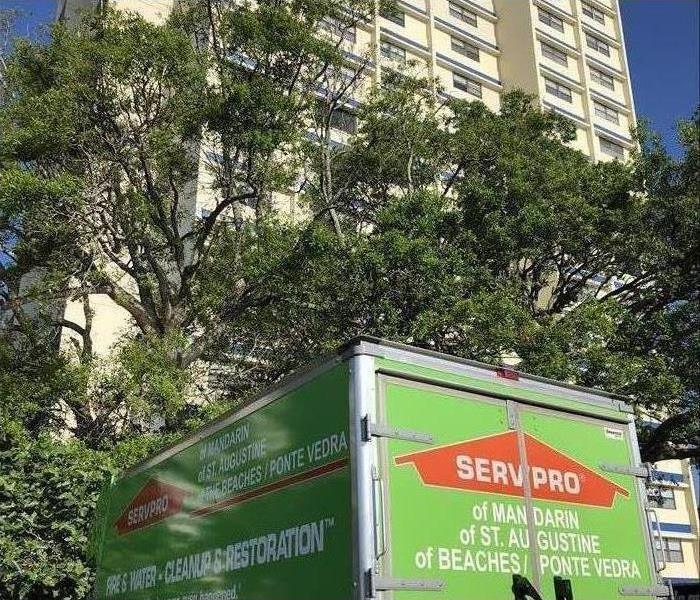Getting Your Building Back to Normal After a Disaster
5/30/2020 (Permalink)
 SERVPRO of Jacksonville Beach/Ponte Vedra recently helped an assisted living facility in Jacksonville that was affected by water damage.
SERVPRO of Jacksonville Beach/Ponte Vedra recently helped an assisted living facility in Jacksonville that was affected by water damage.
Getting back to normal after your commercial building has flooded is challenging. Juggling the drying process while trying to not upset tenants or residents comes with its own share of problems.
Commercial water damage restoration not only restores a building, it restores jobs and income to the people employed at the business, the products or services they give to their customers. It also restores the healthy environment for everyone who utilizes the structure. If it’s not done right, or on time, the result can the closing of the facility, business relocation, and severe impact to an organization’s bottom line.
The scope of water damage in commercial settings is frequently wider and more extreme than in a residential scenario, water damage remediation specialists with experience specific to commercial buildings are positioned to provide effective emergency service when the need arises.
Here’s a typical protocol utilized in commercial water damage restoration:
- All areas contacted with water are inventoried, including affected building materials and furniture. Any wet carpet must be located and identified.
- Wet ceiling tiles may be removed and discarded after the event. Ceiling tiles usually are not salvageable.
- A moisture meter should be utilized to check for water-damaged drywall. Disinfection and mold control techniques may need to be initiated.
- Wet electrical components are assumed to be hazardous. A qualified maintenance technician or electrician should cut off power to affected areas. Inspection by a building inspector or electrician is required to determine the need to replace wet wiring, circuit breakers, outlets and light fixtures.
- Upholstered furniture wet by flood water, roof leaks, or sewage should be discarded. Furniture contacted by drinking water can be air-dried if done within 24 hours. Laminate or hardwood furniture can be cleaned with a disinfectant solution and reused; particle board furniture may be discarded.
- Carpet contaminated by sewage must be disposed. Carpet wet by drinking water or rain water through roof leaks may have water extracted and then be sterilized.





 24/7 Emergency Service
24/7 Emergency Service